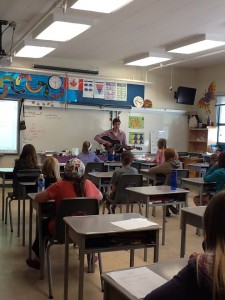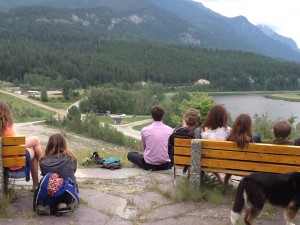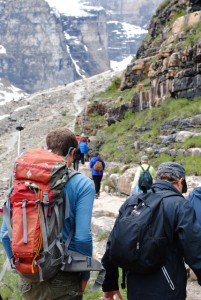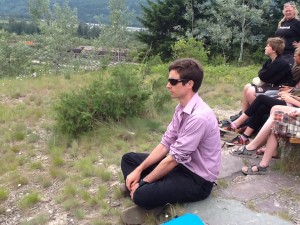In an essay I wrote earlier this year, in contemplating the the purpose of mandatory schooling in Canada, I argued that the goal of education is to enhance democracy, by teaching students to be critical, deliberative citizens who can affect conscious social change with diverse understandings of moral, political, social, economic, and cultural paradigms. Apathetic citizens, unaware of the issues that affect their lives, invalidate the democratic system that necessitates informed consent, and active participation in the framing of our Canadian identities and philosophies. Democracy facilitates the movement and progress of society to achieve more equitable, virtuous states, through investing sovereignty in the people to direct change, and is worth revitalizing. An informed citizenry aware of multiple perspectives and their place within society will be able to better direct their lives, and the lives of all Canadians with greater autonomy and foresight.
With a building democratic deficit present in Canada today that has become most conspicuous amongst younger generations, I feel that my role as a teacher is to reinvigorate democracy through activating students to be engaged, informed, critical and concerned with the movement of the society in which they exist.
My philosophy as a teacher builds upon this foundational perspective on education, and aims to unearth a motivation in students to examine academic topics in an inspired, personalized, autonomous, integrated, critical and exploratory way. I intend to do this by way of helping students generate intrinsic motivations, and integrating the arts into the curriculum.
I want to leave what Paulo Freire calls the “banking method”-that is, ‘depositing information within the minds of students for them to memorize and regurgitate-behind and awaken an impassioned intellectual curiosity within my students, through creating a fertile ground of self-direction and exploration. I want to guide and facilitate, not regurgitate rote-facts and suffocating platitudes to yawns and wilting classroom climates. I want to help students locate their passions, and use those passions as launch pads into the lofty dimensions of heightened intellectual potential! I want to help students locate the skills and tools to operate as engaged, informed, problem solving citizens facing an unknown future. I want to learn with my students, and push them to achieve their best. I want a classroom abuzz, excited, and unendingly striving to learn! Students who are informed, critical, and actively engaged are the antidote to apathy and the democratic deficit.
To achieve this level of classroom engagement, I first need to surface a system of motivation that can affect the social, emotional and academic progress for a diverse group of students. As Carol Ames argues in a piece on motivation in the classroom, students can be driven extrinsically by motivators such as grades, praise, rules and consequences, or can be driven intrinsically, where internal striving for satisfaction with academic and behavioral actions, not external forces, work as motivators for behaviors and academic progress. I want to facilitate the development of students who are intrinsically motivated to learn, so that when they leave the classroom they continue to seek information on their own, and are inherently interested in bolstering their knowledge-set. I want to nurture academic curiosity in my students, not create a system of rigid compliance to external motivators. Democracy will be strengthened with a curious populous, flexible in their thinking, and intrinsically driven to educate and inform themselves.
In order to facilitate this, I want to use a personalized learning pedagogy that individualizes the curriculum with flexibility and choice to fit within the framework of independent student interest and passions. I share these goals with the new BC education plan, that has articulated a blueprint to propel schooling into the fast-paced current of the 21st century, with a technologically infused classroom that promotes personalized learning, and autonomy in the classroom.
With autonomy, students can frame their studies within their own interests, and have a greater level of investment in their work. Choice can activate the idle, disinterested student, fatigued, apathetic and listless to a reinvigorated state, of excited investment in the furthering of their education. In my practicum, I was able to reach students who were seemingly disinterested in the academic process, by allowing them to explore their interests. Prompting students to investigate curricular areas with liberal quantities of choice and self-direction both satisfied the curriculum, and bolstered interest in the subject matter.
Allowing students the ability to maneuver within the curriculum, and make choices, big or small, improves upon their level of participation, exploration and activation in class. As a teacher, I will strive for ways to personalize the experience of each individual’s educational experience, so as to harness an interest and intrinsic motivation for students to move themselves forward academically, emotionally and socially.
Integrating the arts into the curriculum not only activates what Howard Gardner calls the multiple-intelligences of the human mind, but also harnesses the ability in students to think creatively, critically, and develop the skills to problem solve. Donal O’Donoghue argues that the arts “promote inquiry practices that arouse curiosity, heighten students‘ senses, evoke and provoke memories, invite questions and fosters debate and dialogue.” (165). The arts confront students with uncertainty, and a nebulous space to be filled with meaning based on their own experiences, understandings and interpretations. The arts stimulate the imagination to think critically about, or beyond what exists in the present, and fosters creative problem solving skills that work to make sense of the world through an inventive and innovative manner.
Graeme Chalmers argues that “even small children can learn to see that art, in many different places and settings, can be used to perpetuate and challenge the values of society.” (169). Integrating the arts into the curriculum can help generate students who are not constrained by what they are shown, or told but are capable of critically examining what they are presented, while imagining a plurality of various outcomes.
Reflective, expansive thinking that is flexible, critical and capable of problem solving comes to life when the arts enter the classroom. In my practice, I want to cultivate these skills in my students so they can navigate the future with ease, and imagine a way forward in the perplexingly fast-paced currents of change that is the globalized, technologically infused world in which we exist. Students who have these skills will have the capacity to participate in the democratic state, and have the capacity to seek out information and interpret it critically. The integration of the arts in the curriculum will work towards dismantling the democratic deficit.
As a teacher, it is my responsibility to awaken the innate curiosity of every student, and help them find a drive to seek information and actively participate in society. By allowing for autonomy and personalization within an arts integrated curriculum, students will be better positioned to awaken their intrinsic motivations to seek information and participate in their learning, in a flexible, critical and engaged manner. From my fundamental beliefs that a teachers role revolves around mitigating the democratic deficit, these philosophies work to arm students with attributes of active democratic citizens.
Work Cited:
Ames, C. A. (1990). Motivation: What teachers need to know. Teachers College Record, 91, 409-421.
Ames, Carol. (1992) Classroom: Goals, Structures and Motivation. Journal of Educational Psychology, 84(3), 261-271
Helding, Lynn. “Howard Gardner’s Theory of Multiple Intelligences.(MINDFUL VOICE).” Journal of Singing 66.2 (2009): 193. Print.
Chalmers, Graeme (2011). Art education and social justice: An Elementary Perspective. In K. Grauer, R. Irwin, and M. Emme (Eds.), StARTing With . . ., Third Edition, Toronto, Ontario: Canadian Society for Education
O’Donoghue, D. (2011). Art Education for our Time: Promoting Education Over Conservatism. In K. Grauer, R. Irwin, and M. Emme (Eds.), StARTing With . . ., Third Edition, Toronto, Ontario: Canadian Society for Education





The F5 101 Dumps is designed to help individuals prepare for the Application Delivery Fundamentals exam. This test assesses your knowledge of key F5 concepts such as creating searches, reports, and dashboards, understanding the use of fields, data models, and Pivot, as well as the ability to optimize search performance. It simulates the real exam environment, allowing candidates to gain confidence and familiarity with the types of questions they might encounter. This F5 101 practice test is ideal for those looking to validate their skills and improve their chances of passing the F5 certification exam.